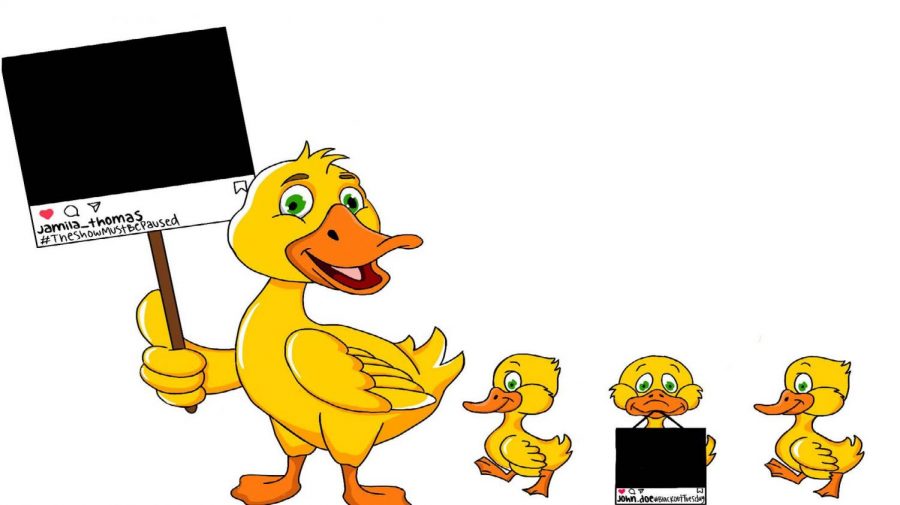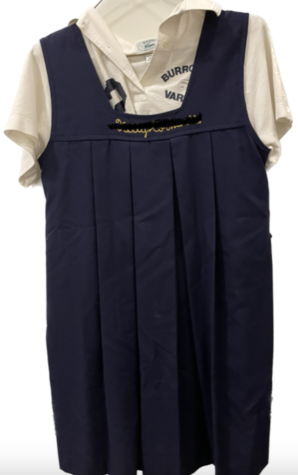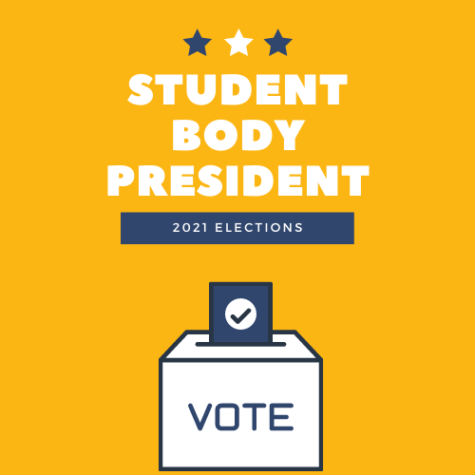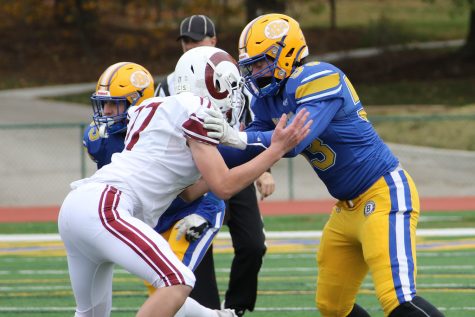Social Media Activism: Performance or Informative?
September 28, 2020
Considering teens are on social media every day, the recent activism seen on social media has dramatic influence on their everyday lives, but while some activism comes from genuine concern, others have seen their feeds flooding with advocacy, and feel the need to post as well–not necessarily for the cause, but because everyone else is. If you have been on social media in the past couple of months, you may have noticed far more content than usual. There have been an abundance of posts circulating with information about the Black Lives Matter movement and other political movements, what you can do to get involved, and how you can help. Apps like Instagram and Tik Tok have seen an increase in political activism over the summer since the death of George Floyd, and President Donald J. Trump’s rally in Tulsa, Oklahoma.
Generation Z has the unique privilege and advantage of social media, which other generations did not grow up with or use until later in life. We are able to access any information we need with a quick type in the search bar. Recently, this has brought us the opportunity to easily get involved in peaceful protests and political activism. You can quickly find out if there are protests for a cause you care about nearby, or how to get involved with a cause you believe in. The recent killing of George Floyd caused a massive movement all across America, leading to thousands of protests with the intentions to defund the police system. Many members of the JBS community attended these protests, showing their support from the Black Lives Matter movement.
The Black Lives Matter movement officially began in 2013, when George Zimmerman, the Sanford, FL man who killed African-American teen Trayvon Martin, was acquitted. It grew following the 2014 deaths of Eric Garner, Freddie Gray, and Michael Brown and, after several years out of the national spotlight, again in 2020 with the killings of George Floyd, Breonna Taylor, and Ahmaud Aubry. Their mission is to “eradicate white supremacy and build local power to intervene in violence inflicted on Black communities by the state and vigilantes.” Since their start, BLM has grown an enormous platform, with over 24.6 million posts under #blacklivesmatter, and over 4 million Instagram followers.
It has also led to the increase of “Insta Threads”; aesthetically pleasing slideshows that give information and other viewpoints on different topics. These brightly colored Instagram posts appeal to a younger demographic because they are easy to understand. The ability to easily post information on your story or TikTok is quite enticing, because it is an easy way to show your support and spread information around quickly. However, blindly believing whatever we see on the internet can also be quite harmful. Often, Instagram threads do not cite their sources, leading to the potential of misinformation. Ideas often lean to one side of the political spectrum, leading to a somewhat false sense of knowledge. While social media can potentially be harmful in some ways, it is very helpful in other ways. Social media has helped platforms like Black Lives Matter organize protests in real time, relay live information, and push back against false narratives. Social media allows for organizations like BLM to establish themselves in the mainstream without needing an actual place of business.
Another example of social media’s effect on political affairs happened last June, when President Donald Trump announced he would be hosting a rally in Tulsa, Oklahoma. On June 11th, Trump’s campaign twitter, @TeamTrump, announced that you could register for free tickets to the rally using your phone. Shortly after, an surge of teens on Tik Tok and Twitter reserving multiple tickets under fake names with no intention to go, quickly gained popularity, many videos receiving millions of views and hundreds of thousands of likes.
Their frustration with Mr. Trump’s rally stems not just from the ongoing COVID-19 pandemic that led local health officials to deem it to be unsafe, but also because it was being hosted on Juneteenth, a holiday celebrating the emancipation of slaves, and that it was held in Tulsa–the site of the 1921 Tulsa race massacre, where a white mob torched one of the most affluent and vibrant Black communities of the time.
The event was eventually pushed back to June 20th, but that did not stop people from continuing to reserve seats. Trump had rented out the BOK’s center in Tulsa for his rally, which can hold up to 19,200 people, but on the night of his rally, it only held 6,200, according to forbes.com, despite his team announcing they had received more than a million ticket requests. Then-Trump Campaign Manager and Senior Advisor Brad Parscale denied that teen TikTokers had anything to do with the low attendance numbers, telling CNN: “Leftists and online trolls doing a victory lap, thinking they somehow impacted rally attendance, don’t know what they’re talking about or how our rallies work.” However, some politicians seemed to think differently. Congresswoman Alexandria Ocasio-Cortez, a Democrat from New York, responded to a tweet by Parscale saying “Actually you just got ROCKED by teens on TikTok who flooded the Trump campaign w/ fake ticket reservations & tricked you into believing a million people wanted your white supremacist open mic enough to pack an arena during COVID.” This win for liberal teens and TikTok users shows that social media gives a great platform to young teen activists who cannot yet vote.
With the influence of social media, political activism is involved in everyday life, with posts constantly circulating. This can provide insight and education, but also give someone a way to act as though they care without having to do anything more.
As soon as the clock struck midnight on June 2, 2020, the #BlackLivesMatter hashtag, once filled with information and resources, was flooded with a sea of black squares. This movement of solidarity was led by Jamila Thomas and Brianna Agyemang–two black women in the music industry who, in an attempt to hold the industry responsible for what they believed to be performative activism, advocated for real action to be taken instead of only posts with #BLM and started #TheShowMustBePaused. They did this by posting only a black square on Instagram, thus showing the impact Black Americans and their allies have on day-to-day life. People caught wind of the movement fast, and it quickly took a life of its own with people using the hashtag #BlackOutTuesday instead #TheShowMustBePaused. The impact spread far past just the music industry and into mainstream media. What’s the problem here? Kehlani describes it as, “a bunch of suits on Instagram saying black out Tuesday for the industry. With no context. No nod to the original organizers or the original flyer.” Despite the problem of police brutality existing for centuries, new advocates came out of the woodwork seemingly overnight. On the Monday before #BlackOutTuesday, there were roughly 11.9 million posts under the hashtag #BlackLivesMatter. “It took seven years to get 11.9 million posts, and within seven hours, there were already a million more of them, mostly black boxes,” Feminista Jones says. Jones is an author, speaker, and longtime activist. “This performative ally stuff is not helping, and this really catered to the people who want to show they care,” she commented. This is not the first time we have seen performative activism on social media though. In previous years, posts have circulated where you “tag 10 friends to support ____.” While this may be raising awareness, some say that it perpetuates the idea that activism is a trend. Videos and pictures have surfaced of popular influencers staging photoshoots at protests, or in front of looted buildings, to make themselves appear relevant. “Right now the biggest thing is not necessarily making a watercolor Black Lives Matter sign or doing an interpretive dance,” says Anthony James Williams, a sociology PhD candidate. “But if that’s all you are contributing to the struggle right now, there’s a lot more you can do.”
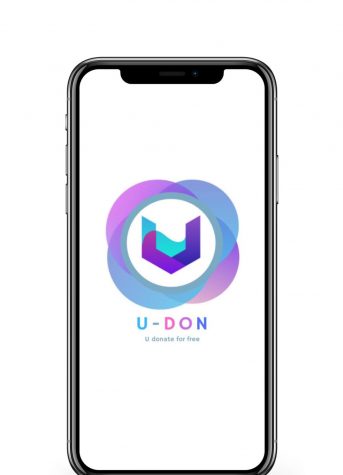
Activism on social media has both positive and negative impacts. One day on Twitter, the #whitelives trending because Kpop (the music genre) fans were flooding the hashtag with videos and pictures of their favorite celebrities, distracting from the people using that hashtag to say something destructive and divisive about the Black Lives Matter movement. In other instances, though people are not as compassionate. “Troll” accounts are accounts made on a social media platform with no indication of the user’s identity, so they can say things they would likely never say if their name was displayed. With the influence of social media, political activism is involved in everyday life, with posts constantly circulating. This can provide insight and education, but also give someone a way to act as though they care without having to do anything more. There are many things you can do to help without even leaving your bed- texting “FLOYD” to 55156 and “JUSTICE” to 688366 to only name a few text lines where you can show your support. Signing petitions, sending pre-written emails, eating at black-owned restaurants, even downloading the app UDON where donations are made as you play a game, are all ways to advocate.
